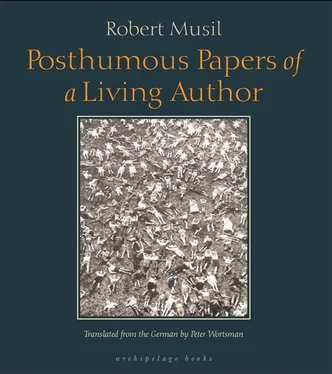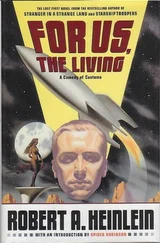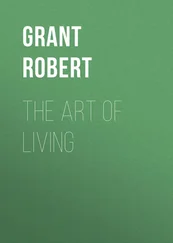How are we to make sense of this? Apparently inherent to the nature of temporal matters is a certain degree of exaggeration, a “superplus” and superabundance. Even a slap in the face requires more rage than you can be accountable for. This enthusiasm of “now” burns up, and as soon as it has become superfluous, it is extinguished by forgetting, a very productive and fertile activity by means of which we only really first become — and are ever and anew reconstituted as — that easygoing, pleasant, and consequent person for whose sake we excuse everything on earth.
Art rocks the boat in this regard. Nothing emanates from it that could endure without enthusiasm. It is, as it were, nothing but enthusiasm without bones and ashes, pure enthusiasm that burns for no reason and nonetheless is stuck in a frame or in between the covers of a book, as though nothing had happened. It never becomes our past, but always remains that which has passed from us. It is understandable then that we should look back at it every ten or twenty-five years with an uneasy eye!
Only great art, that indeed which alone, strictly speaking, merits being called art, constitutes an exception. But the latter has never really fit that well in the society of the living.
Binoculars
Slow motion pictures dive beneath the agitated surface, and it is their magic that permits the spectator to see himself with open eyes, as it were, swimming among the objects of life. Movies may have popularized this phenomenon; but it has long been available to us by a means still recommended nowadays because of its convenience: by looking, that is, through a telescope at objects that one would usually not watch through a telescope. An experiment of this sort is described in the following pages.
The first object of our attention was a sign on the gate of a beautiful old building located directly opposite our observation post, a building that houses a well-known government agency. This sign proclaimed, through the binoculars lens, that the government agency held office hours from nine to four. This already elicited the observer’s surprise; for it was three o’clock, and not only was there no official in sight, but the observer could not recall ever having seen with his naked eye an official in the agency at this hour. Finally he discovered two tiny figures standing close together behind a remote window, drumming their fingers on the windowpane and staring down at the street. And no sooner had he discovered them, than, as they stood there trapped in the little circle of his instrument, he understood with warm sympathy and realized with pride how important this telescoping function might yet become for bureaucrats, and for men in general who have a sacrosanct number of hours to sit out in an office.
The second object of his attention was the building itself. It was an old palace with a festoon of fruit on the capital of the stone pillars and a beautiful articulation of the façade in height and breadth, and while the spyglass still searched for the officials in attendance, the observer was already struck by how clearly this support structure, these windows and cornices had positioned themselves in the circle of his looking glass; now that he had taken it all in with a single glance, he was almost startled at the stony perspectival exactitude with which it all returned his gaze. He suddenly realized that these horizontal lines that conjoined at some point toward the back of the building, these contracting windows that became all the more trapezoid the farther to the side that they were situated — indeed, this entire avalanche of reasonable, familiar limitations into a funnel of foreshortening located somewhere to the side and to the rear — that all this had until now struck him as a Renaissance nightmare: an awful painter’s legend, actually, of disappearing lines, reputedly exaggerated, though there may also be some truth to it. But now he saw it before his very eyes, magnified to more than life-size, and looking far worse than the most unlikely rumor.
And if you don’t believe that the world is really like this, just focus on a streetcar. The trolley made an S-shaped double curve in front of the palace. Countless times from his second story window, the observer had witnessed it approaching, seen it make this very S-shaped double curve and drive away again: at every stage of this development, the same elongated red train. But when he watched it through the binoculars, he noticed something completely different: An inexplicable force suddenly pressed this contraption together like a cardboard box, its walls squeezed ever more obliquely together (any minute it would be completely flat); then the force let up, the car grew wide to the rear, a movement swept once again over all its surfaces, and while the flabbergasted eyewitness released the breath he had held in his breast, the trusty old red box was back to its normal shape again. All this happened so clearly, so out in the open, as he watched it with his lens (and not just in the private chamber of his eye), that he could have sworn it was no less real than watching a fan being opened and shut. And if you don’t believe it, you can try it yourself. All you need is an apartment toward which a streetcar approaches in an S-shaped curve.
Once this discovery had been made, the discoverer naturally turned to watching women; and thus was revealed to him the whole inescapable significance of human architectonics. That which in a woman is round, and according to the fashion of the day was then more painstakingly hidden than it is today (so that it looked like nothing more than a small rhythmic irregularity in the otherwise boyish flow of motion), arched inward again, under the incorruptible eye of the binoculars, turning back into those ancient simple hills that constitute the eternal landscape of love. And round about, unexpectedly, a myriad of whispering folds, aroused by every step, opened and shut in her dress. They announced to the naked eye the inviolable appearance of the wearer or the talents of the tailor, and secretly revealed that which is not shown; for when magnified, impulses are actualized, and when viewed through the tube of the looking glass, every woman becomes a psychologically spied Susannah in the bath of her dress. But it was amazing how soon such a sophisticated curiosity evaporated under the immovable and clearly somewhat spiteful equanimity of the binoculars’ glance; and nothing remained but the trifling and flicker of those eternally constant values that require no psychology.
Enough of this! The best way to insure against an obscene misuse of this philosophical tool is to ponder its theory, “Isolation.” We always see things amidst their surroundings and generally perceive them according to what function they serve in that context. But remove them from that context and they suddenly become incomprehensible and terrible, the way things must have been on the first day after creation, before the new phenomena had yet grown accustomed to each other and to us. So, too, in the luminous solitude of our telescopic circle, everything becomes clearer and larger, but above all, things become more arcane and demonic. A hat which, according to common custom crowns the masculine figure and is synonymous with the overall appearance of the man of worldly influence and power (an altogether skittish form, belonging to the body as well as the soul), instantly degenerates into something insane when the binoculars strip it of its romantic attachments to the world around it and restore its true isolated optical presence. A woman’s charm is fatally undercut as soon as the lens perceives her from the hem of her skirt upwards as a sack-like space from which the two twisted little slits peer forth. And how frightening does the ivory flashing of love become, and how infinitely comical is anger, when both are separated from their effect, isolated in the circle of the lens! There is between our clothes and ourselves, and between our customs and ourselves, a convoluted relationship of moral credit according to which we first lend customs and clothes their entire significance, and then borrow it back again, paying interest on the interest; and this is why we border on bankruptcy when we cut off their line of credit.
Читать дальше











